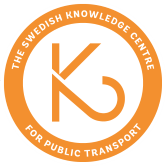Micro-level evaluation of bus stop performance using automated analysis of aerial video
Micro-level evaluation of bus stop performance using automated analysis of aerial video
The project focused on how video recordings made from drones can be used to better understand how bus stops work. In the project, a number of bus stops have been filmed and investigated. The focus has been on how the design affects how easily accessible a place is perceived, which can be measured using the "Space Syntax" theory. In Space Syntax, sightlines are used to study spatial structures. The sightlines are used as a basis for a network analysis that calculates how many "turns" a pedestrian must make to get through an area. This type of network analysis can provide an estimate of how well integrated a specific location is in general or based on a specific function. For example, it is possible to analyze how easy it is to get to the bus stop or how easy it is to get from the bus stop to the nearest bike rack.
However, there is a problem with using the Space Syntax theory at bus stops and other places that contain roads. In these places it is sometimes possible to see a place (for example on the other side of the road) but not allowed to follow the line of sight directly. One of the questions during the project has therefore been whether the Space Syntax theory can handle this limitation and still provide valuable information about pedestrian behavior.
The project has investigated how the Space Syntax theory works at bus stops by studying the relationship between how well integrated an area is based on the theory and how many pedestrians have been identified in the drone film of the same area. The results show that most pedestrians move in more well-integrated areas, which supports the theory. Similar results have been found in all seven places studied in the project, which indicates a clear connection between how well integrated an area is and how many pedestrians move in the area.
The results of the study led to continued work in the project COmpeting and COmplementary MObility solutions in urban contexts (COCOMO).
